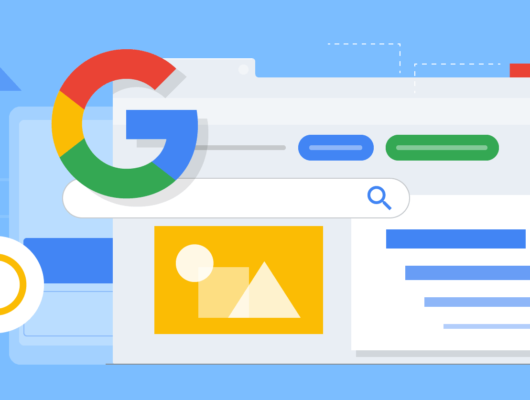In today’s digital age, local search has become a critical component of business success. With over 46% of all Google searches seeking local information, optimizing your presence on Google Maps is essential for attracting nearby customers.
A well-optimized Google Maps listing can significantly enhance your visibility, leading to increased foot traffic and sales. This article will guide you through effective strategies to optimize your Google Maps presence for better local SEO.
1. Claim and Verify Your Google Business Profile
The first step in optimizing your Google Maps listing is to claim and verify your Google Business Profile (GBP), previously known as Google My Business (GMB).
- Why It Matters: A verified business profile allows you to control how your business appears in Google search results and Google Maps. Verification is essential for building credibility and trust with potential customers.
- How to Claim Your Business:
- Go to Google Business.
- Click on “Manage now” and follow the prompts to enter your business information.
- Choose a verification method, which typically involves receiving a postcard at your business address.
Tip: After claiming, ensure you regularly update your profile with accurate information.
2. Optimize Your Business Information
Once your Google Business Profile is verified, it’s crucial to fill out all sections with complete and accurate information.
- Business Name: Use your official business name without extra keywords. Avoid practices like keyword stuffing, which can lead to penalties.
- Address and Phone Number (NAP): Ensure your business address and phone number are accurate and consistent across all platforms. This consistency is critical for local SEO.
- Business Categories:
- Choose a primary category that best represents your business. For example, if you own a coffee shop, your primary category should be “Coffee Shop.”
- Add relevant secondary categories to cover additional services or products you offer.
- Business Hours: Clearly state your operating hours, including special holiday hours. Keeping this updated is crucial to avoid frustrating potential customers.
Tip: Use keywords in your business description, but ensure it reads naturally. Highlight what makes your business unique.
3. Enhance Visual Content
High-quality photos and videos can make a significant difference in how potential customers perceive your business.
- Types of Visuals to Include:
- Exterior Photos: Help customers easily identify your location.
- Interior Photos: Give a glimpse of your ambiance, making customers feel more comfortable visiting.
- Product/Service Photos: Showcase your offerings, such as dishes from your restaurant or items for sale.
- Team Photos: Introduce your staff to create a personal connection with customers.
- Videos: Short videos can highlight special features, promotions, or customer testimonials.
Tip: Regularly update your images to keep your listing fresh and engaging.
4. Gather and Manage Customer Reviews
Online reviews are a significant ranking factor for local SEO. Businesses with positive reviews are more likely to rank higher in Google Maps.
- Encouraging Reviews:
- Ask satisfied customers to leave reviews on your Google Business Profile. You can do this via email requests, in-store signage, or at the end of a service.
- Responding to Reviews:
- Engage with all reviews, both positive and negative. Thank customers for positive feedback and address any concerns in negative reviews professionally.
Tip: Regularly monitoring your reviews can enhance customer trust and improve your overall rating.
5. Utilize Google Posts
Google Business Profile allows you to create posts that appear in your Google Maps listing. These posts can promote updates, events, or special offers.
- Types of Posts:
- Announcements: Share new products, services, or changes to your business.
- Events: Promote upcoming events, sales, or community involvement.
- Offers: Highlight special promotions or discounts.
Best Practices:
- Use engaging images or videos in your posts.
- Keep your text concise and relevant.
- Include a clear call to action.
Tip: Regularly posting updates helps keep your business active in Google’s eyes and can lead to improved rankings.
6. Optimize Your Website for Local SEO
Your website plays a crucial role in your overall local SEO strategy. Ensure it is optimized for local searches.
- Local Keywords: Use location-based keywords throughout your website content, including titles, meta descriptions, and headers. For instance, if you are a plumber in Chicago, include phrases like “Chicago plumbing services.”
- NAP Consistency: Your website should display your business name, address, and phone number consistently with your Google Business Profile.
- Mobile Optimization: Since many local searches happen on mobile devices, ensure your website is mobile-friendly and loads quickly.
Tip: Use schema markup to help search engines understand your business information better, improving your chances of ranking higher.
7. Build Local Citations
Citations—mentions of your business’s NAP on other websites—are vital for local SEO.
- Submitting to Local Directories: List your business in local online directories like Yelp, Yellow Pages, and industry-specific sites. Ensure your information is accurate and consistent.
- Quality Over Quantity: Focus on building citations from reputable and relevant sources rather than submitting to every directory available.
Tip: Regularly audit your citations to ensure there are no inconsistencies or inaccuracies that could hurt your rankings.
8. Use Google Maps Ads
If you want to increase visibility quickly, consider utilizing Google Ads specifically for local searches.
- How It Works: Your business will appear at the top of local search results as a sponsored listing, labeled as an ad.
- Best Practices:
- Use geo-targeting to ensure your ads reach local customers.
- Optimize your ad copy with local keywords and a clear call to action.
Tip: Monitor the performance of your ads and adjust your strategies based on user engagement and click-through rates.
9. Monitor Insights and Analytics
Google Business Profile provides valuable insights into how customers interact with your listing. Use this data to refine your strategy.
- Key Metrics to Monitor:
- Search Queries: Understand which search terms led customers to your listing.
- Customer Actions: Track how many users visited your website, requested directions, or called your business.
- Photo Views: Analyze the performance of your photos compared to competitors.
Tip: Regularly review these insights to identify areas for improvement and to adapt your marketing strategies accordingly.
Conclusion
Optimizing your Google Maps presence is a vital part of any local SEO strategy. By claiming and verifying your Google Business Profile, optimizing your information, engaging with customers through reviews and posts, and leveraging analytics, you can significantly enhance your visibility in local search results.
As a result, you’ll attract more customers and drive traffic to your business. Start implementing these strategies today to harness the full potential of Google Maps optimization!






